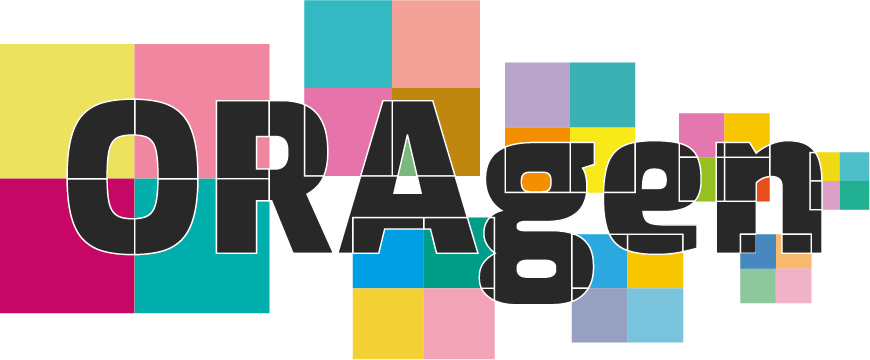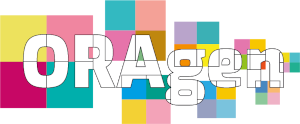We have answered many frequently asked questions below – but if we have missed something, do not hesitate to contact us via email: fliddell@ed.ac.uk; chris.elsden@ed.ac.uk
What is the demonstrator?
The demonstrator is an online tool that explores how to embed attribution and licences inside media files. It is a form of ‘unfinished software’ aiming to present a complex technical framework called ORA in a way that enables users to understand the key components of this framework and ideate on how ORA could be deployed in their own work/practice or address challenges that they face around ownership, rights, and attribution.
What is ORA?
ORA (standing for Ownership, Rights, and Attribution), combines different decentralising technologies (including blockchains, smart contracts, and non-fungible tokens (NFTs)) to implement three key tasks:
- Ownership: It enables creators and end-users to independently prove ownership of their digital assets, and any rights/licences associated with them.
- Rights: It enables creators to design and issue specific and bespoke licences for their digital creations. These licences are machine-readable and publicly recorded on a distributed ledger.
- Attribution: It embeds metadata directly inside digital media files in the form of a manifest file, which cannot be easily stripped or removed. This includes provenance data, which tracks the origin of all the media involved in creating a new artwork. This is implemented through the C2PA metadata standard.
What are decentralising technologies and why are they important?
Decentralising technologies include blockchains, a peer-to-peer ledger system that records append-only and timestamped information. For ORAgen, we have used Ethereum, a public blockchain. Smart contracts can be encoded onto a blockchain to support the production and exchange of NFTs, which are used to represent diverse types of digital assets (such as media objects). This enables users to prove ownership over their digital assets through the blockchain ledger, meaning that they are not reliant on third-parties or intermediaries to assert their ownership.
What do I do in the demo?
In the demo you have the option to create, reuse, or engage. Start by choosing one of the options.
In create context, the aim is to create a media object composing of four-tiles which you fill by drag-and-dropping from the colour picker. Once completed, you need to define the information about your artwork (metadata), and define your licences associated with it which in the demo is limited to how many times you would like it to be reused.
In the reuse context, you have a similar task to create but with the addition of using media created by previous users. To do so, click on the re-use palette and hover over the different media objects to find out who is the creator is and how many reuse licences are available to use. Once completed, complete the metadata and licence section as before.
In the engage context, you can explore the different media objects created by previous users. Hover over the works to see who made them and how many reuse licences are available. Click on the provenance to explore a visual presentation of the different media that were used to make up that specific media object.
Does it matter which profile I choose?
Each profile involves the same tasks and activities, the different profiles available are there to attribute a name to each media object created.
What kind of metadata can I use?
In the demo, metadata is limited to title and description but in ORA you can embed any information that you think is important for others to know. This information is permanently stored inside the media file.
What kind of licences can I use?
In the demo, licences are limited to how many times others can reuse the media object, but ORA offers creators the chance to make bespoke licences which go beyond the conventions of copyright, we encourage to think about the alternative types of licences you might want in your work to either restrict or encourage different types of engagement and reuse.
What is the provenance graph?
The provenance graph draws from the metadata embedded inside a work to present a visual family tree of a specific media object’s origins. This is just one example of how this data might be displayed and used, we encourage you to think about other ways provenance data might be useful in your work and/or how it could be engaged with by others.
Can I keep the works/NFTs that I make?
The works are minted as NFTs but as this is a demo rather than an application, we are working on a private chain therefore we are not able to transfer them to you.
Why is ORAgen important?
We are interested in the design of ownership, rights, and attribution and the implications for the relationships between media creators, producers, users, and audiences. We want to consider how a technical framework such as ORA might provide new ways of design ownership, rights, and attribution while also encompassing the technical, legal, economic, social, and cultural rules and infrastructure in which media objects exist in. Specifically, we want to explore how ORA might support meaningful attribution to different kinds of digital media creation, what new value and services can be created based upon provenance data, how aspects of ownership of digital media might be unbundled and re-bundled across different creators, audiences, and intermediaries, and how bespoke licences could support more valuable forms of media re-use and engagement.
Interested in learning more?
As part of the next stage of our research, we are looking for partners to develop the demo. If you or your organisation are interested in learning more about the demo and the research behind it, please contact fliddell@ed.ac.uk; chris.elsden@ed.ac.uk




